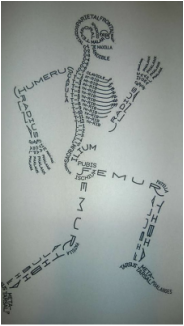|
As we come to the last few weeks of the EMT course, it seems that we are also coming full circle, revisiting early class materials on the lifecycle of human development. One of the more interesting aspects of our current study is the process of childbirth, and the EMT skills that support it.
Needless to say, this has made for some humorous practical skill sessions,mostly involving EMT students trying not to laugh as their peer is arm deep in the abdomen of the mother (delivery) mannequin, trying to emulate the birth process by pushing the baby mannequin out (with appropriate grunting sounds made entirely by accident in most cases).
0 Comments
With the first set of EMT written and practical tests behind us (Ashley, our Cadet member, and myself both scored very well...thanks to all who offered their well wishes!), our classwork moves on to a more focused set of lectures on medical emergencies, and their associated care and treatment options.
While we are told not to diagnose underlying causes of illness, in practice, EMTs play a very key role in uncovering critical signs and symptoms of those underlying medical issues through our history-taking activities (the aforementioned "million questions"), which we provide to medics and hospital staff as part of our transfer of patient care. The questions also guide us in developing an index of suspicion for what may be happening with our patient, allowing us to be more aware of the risks for cardiac, respiratory or neurological issues that may develop while we are in transport. Classwork this week focused on the various causes of respiratory distress. If you love to read a good detective story, this set of coursework is for you. The textbook almost reads like a good mystery novel, filled with similar signs and symptoms for many different potential causes of dyspnea (or shortness of breath). And only by combining the practical lung sound skills we're learning to listen for, with other vital signs (including pulse rate and blood pressure), key medical history, and signs and symptoms from our observations and the patients own behaviors and expressed issues, can we reach a clear index of suspicion on key underlying possibilities to be aware of.
The keys to providing effective care, however, requires us to understand human anatomy and how all the systems within our bodies both work and inter-relate. And while it is a major amount of stuff to learn, it's probably not much more than the average 8th grade health class or high school biology class.
|
AuthorJon Alperin, one of our MFAS volunteers, shares his journey to becoming an NJ certified EMT. from the Start
Here is Jon's journey, presented in time order:
Archives
June 2016
Categories
All
|



 RSS Feed
RSS Feed
